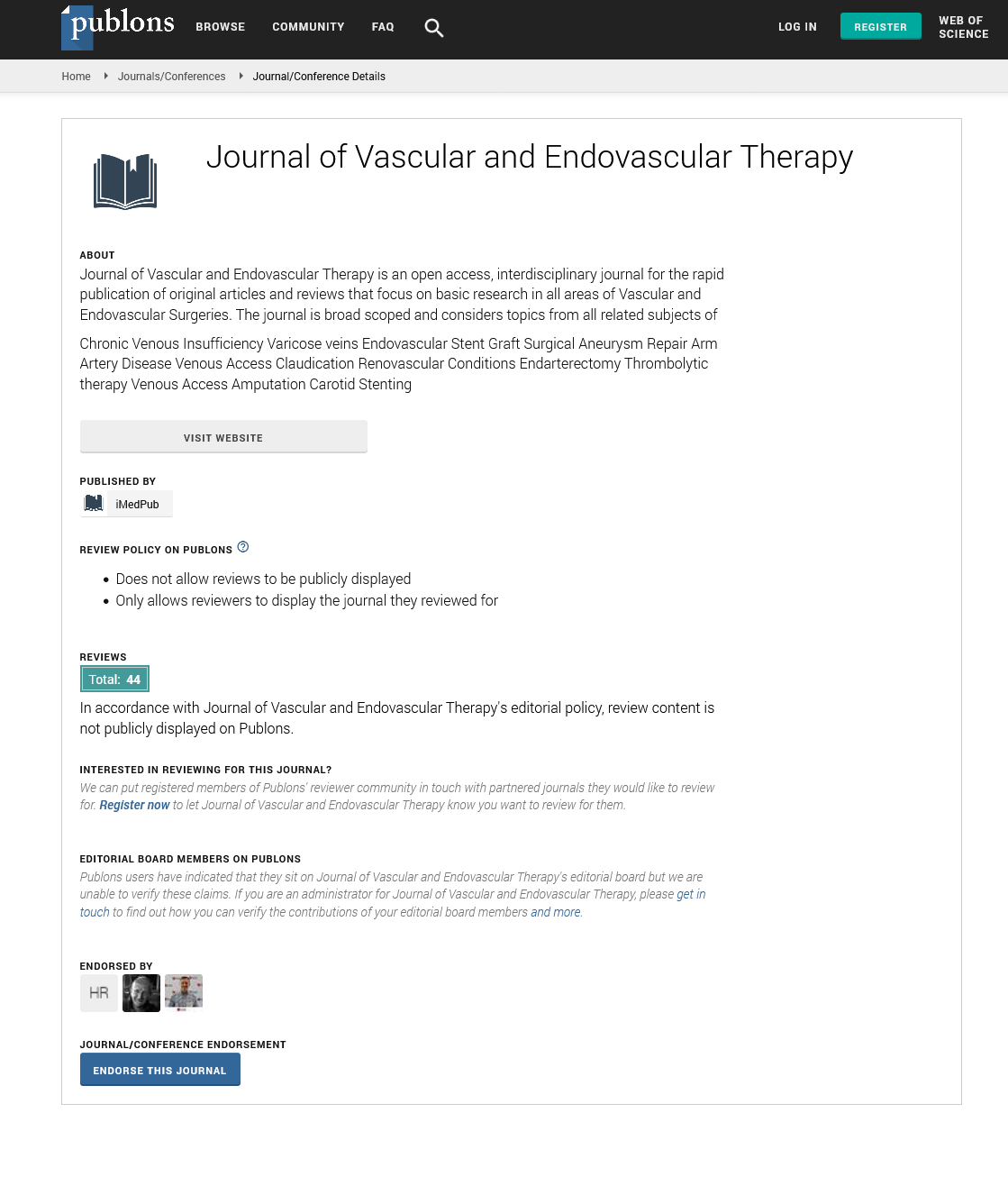ISSN : 2634-7156
Journal of Vascular and Endovascular Therapy
Robotic vascular surgery
4th Edition of World Congress & Exhibition on Vascular Surgery
March 28-29, 2019 Rome, Italy
Petr Stadler
Na Homolce Hospital, Czech Republic
Keynote: J Vasc Endovasc Therapy
DOI: 10.21767/2573-4482-C1-004
Abstract
Objectives: The da Vinci system has been used by a variety of disciplines for laparoscopic procedures but the use of robots in vascular surgery is still relatively unknown. The feasibility of laparoscopic aortic surgery with robotic assistance has been sufficiently demonstrated. Our clinical experience with robotassisted vascular surgery performed using the da Vinci system is herein described.
Methods: Between November 2005 and September 2018, we performed 437 robot-assisted vascular procedures. 291 patients were prospectively evaluated for occlusive diseases, 111 patients for abdominal aortic aneurysm, 5 for a common iliac artery aneurysm, 9 for a splenic artery aneurysm, 1 for internal mammary artery aneurysm, 8 for median arcuate ligament re-lease, 8 for endoleak type II treatment post EVAR, 2 for renal artery reconstruction and two cases were inoperable. 5 hybrid procedures in study were performed.
Results: 417 cases (96%) were successfully completed robotically, 1 patient’s surgery (0.25%) was discontinued during laparoscopy due to heavy aortic calcification. In 16 patients (3.7%) conversion was necessary. The thirty-day mortality rate was 0.5% (2 patients), and early non-lethal postoperative complications were observed in 7 patients (1.6%).
Conclusions: Our experience with robot-assisted laparoscopic surgery has demonstrated the feasibility of this technique for occlusive diseases, aneurysms, endoleak II treatment post EVAR, for median arcuate ligament release and hybrid procedures.
Recent Publications:
1. Stadler P, Dvoracek L, Vitasek P and Matouš P (2016) Robot assisted aortic and non-aortic vascular operations. Eur J Vasc Endovasc Surg. 52(1):22-8.
2. Hsieh C H, Liu S P, Hsu G L Chen H S, Molodysky E, Chen Y H and Yu HJ (2012) Advances in our understanding of mammalian penile evolution, human penile anatomy and human erection physiology: Clinical implications for physicians and surgeons. Medical Science Monitor 18(7):RA118-125.
3. Hsu G L, Hung Y P, Tsai M H, Hsieh C H, Chen H S, Molodysky E, Huynh C C and Yu H J (2012) Penile veins are the principal component in erectile rigidity: a study of penile venous stripping on de-frosted human cadavers. Journal of Andrology 33:1176-1185.
4. Molodysky E, Liu S P and Hsu GL (2013) Penile vascular surgery for treatment of erectile dysfunction: current role and future direction. Arab Journal Urology 11:254-266.
5. Hsu G L, Huang Y P, Tsai M H, Chang H C, Liu S P, Molodysky E and Hsu M C Y (2013) The venous drainage of the corpora cavernosa in the human penis. Arab Journal Urology 11:384-391.
Biography
Petr Stadler, Prof, M.D., Ph.D., Head Department of Vascular Surgery, Na Homolce Hospital in Prague, Czech Republic. He was certified as a console surgeon for the da Vinci surgical system in August, 2005 at the University of California, Irvine. Dr. Stadler is a member of the Czech Association of Cardiovascular Surgery, the ESVS, the ISMICS, the SRS and a found-ing member of the International Endovascular and Laparoscopic Society. He has also received a few prestigious honors from the Czech Association of Cardiovascular Surgery for the best publications in 2004 and 2006, the Letter of Appreciation from Korean Society of Endoscopic and Laparoscopic Surgeons in May 2008, the price of the Czech Society of An-giology for the publication in the year 2007 and the best audiovisual presentation in 2009 in USA (ISMICS) and in 2013 in USA (SCVS). He performed also the robotic vascular opera-tions in South Korea, Russia, Poland and India.
E-mail: Petr.Stadler@homolka.cz
Google Scholar citation report
Citations : 177
Journal of Vascular and Endovascular Therapy received 177 citations as per Google Scholar report
Journal of Vascular and Endovascular Therapy peer review process verified at publons
Abstracted/Indexed in
- Google Scholar
- Open J Gate
- Publons
- Geneva Foundation for Medical Education and Research
- Secret Search Engine Labs
Open Access Journals
- Aquaculture & Veterinary Science
- Chemistry & Chemical Sciences
- Clinical Sciences
- Engineering
- General Science
- Genetics & Molecular Biology
- Health Care & Nursing
- Immunology & Microbiology
- Materials Science
- Mathematics & Physics
- Medical Sciences
- Neurology & Psychiatry
- Oncology & Cancer Science
- Pharmaceutical Sciences
